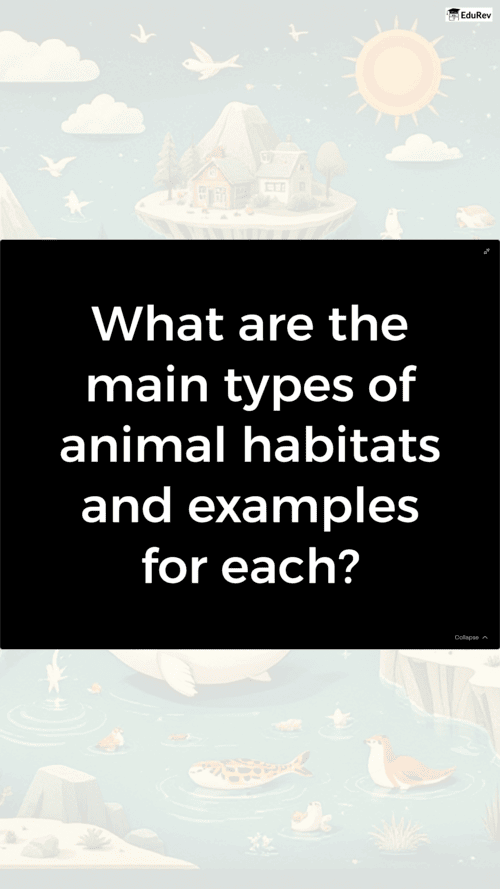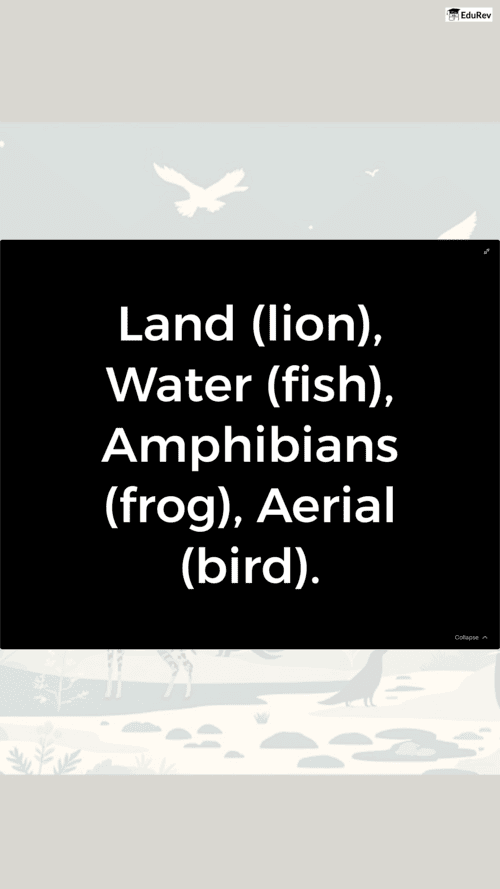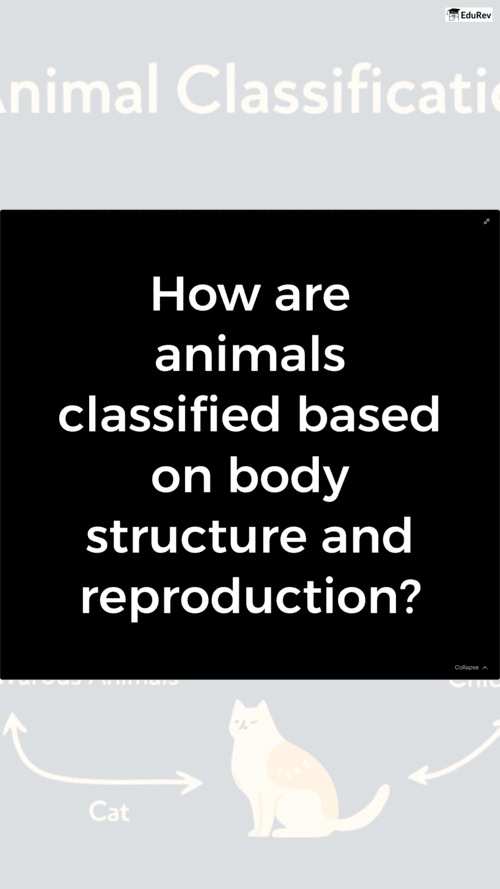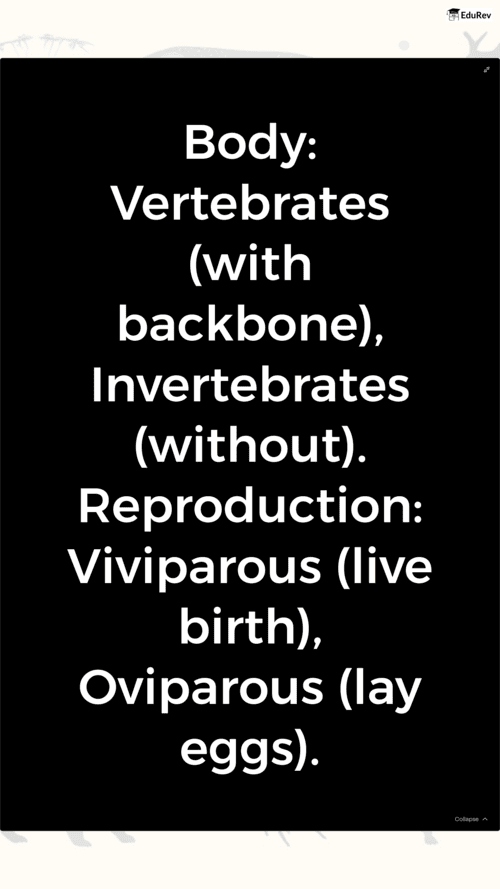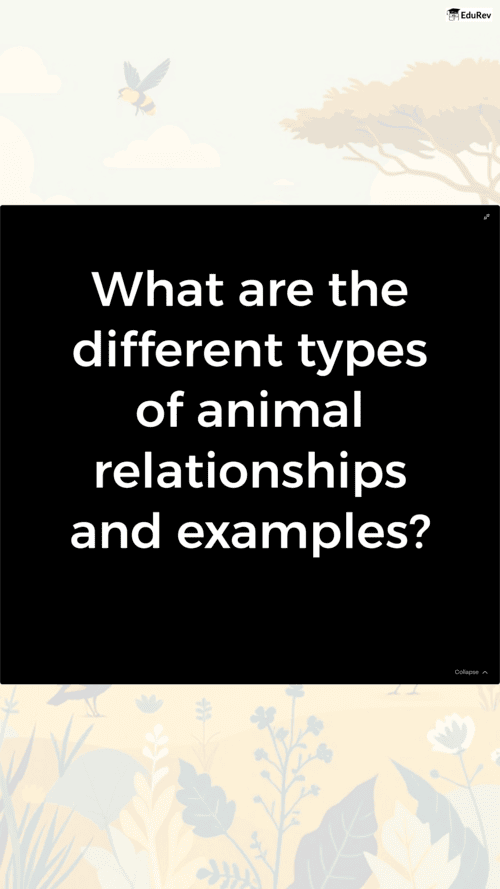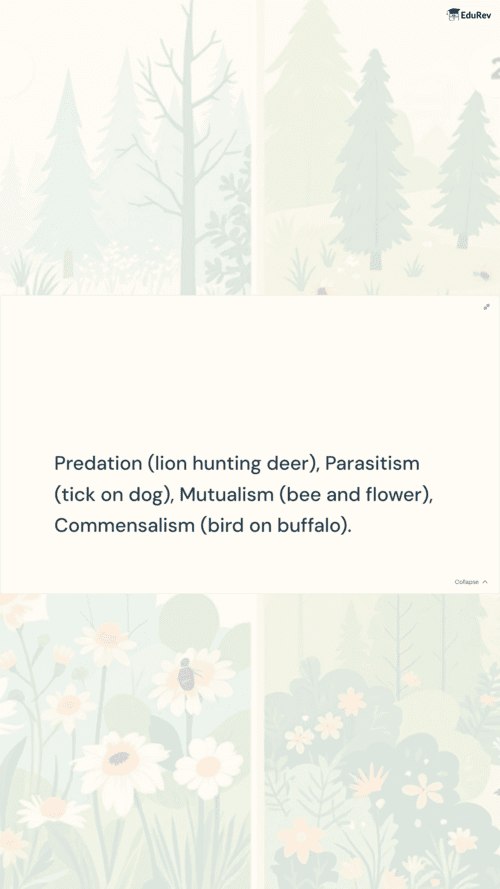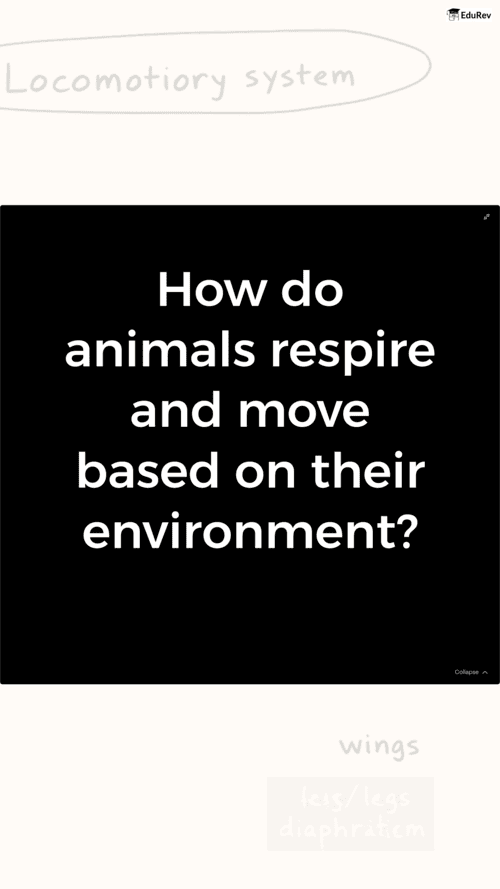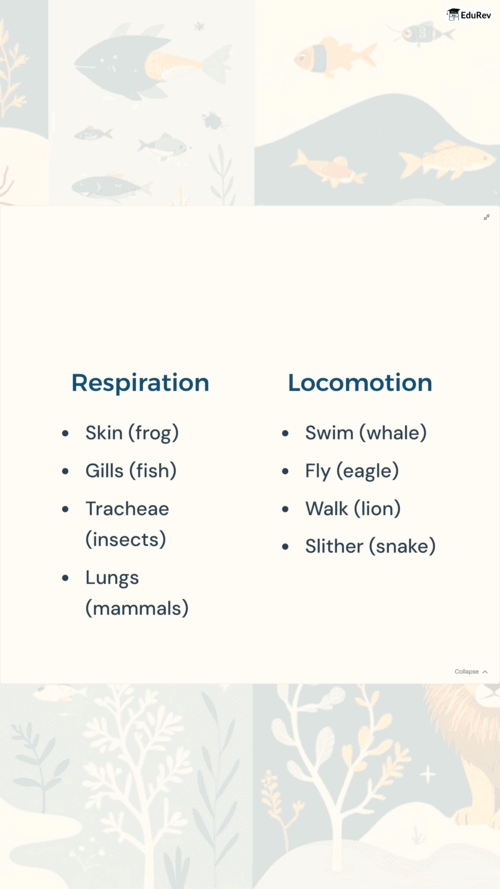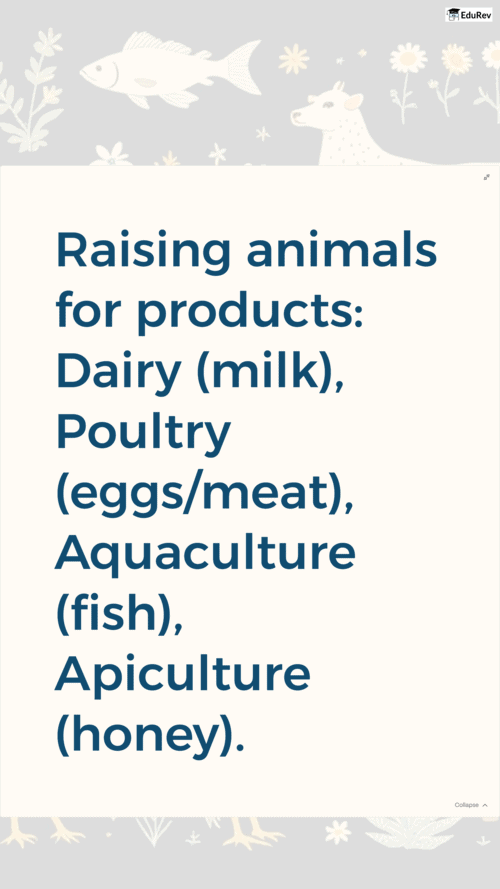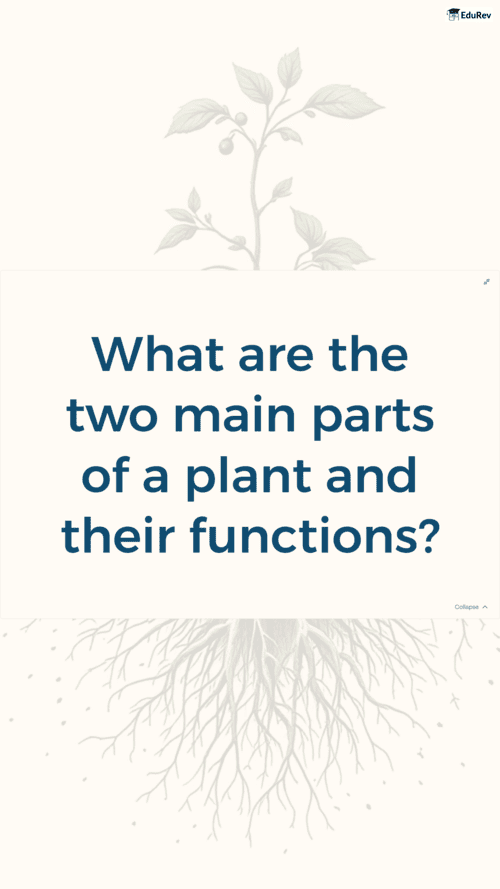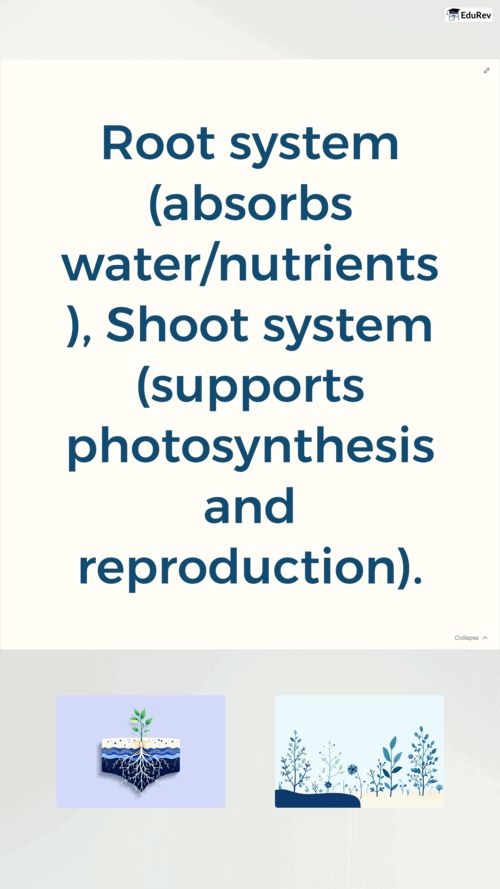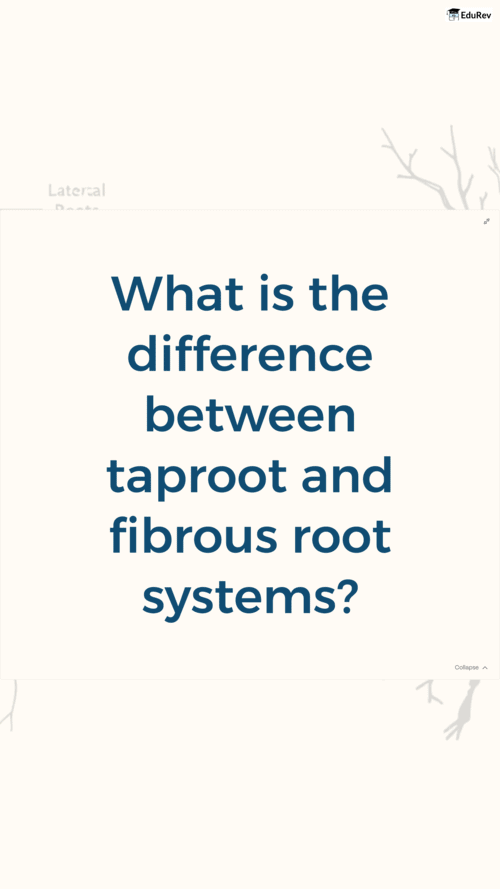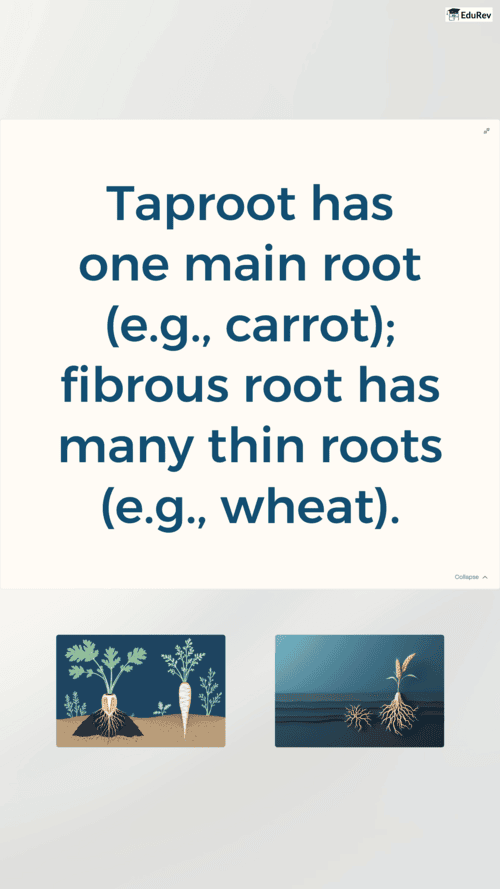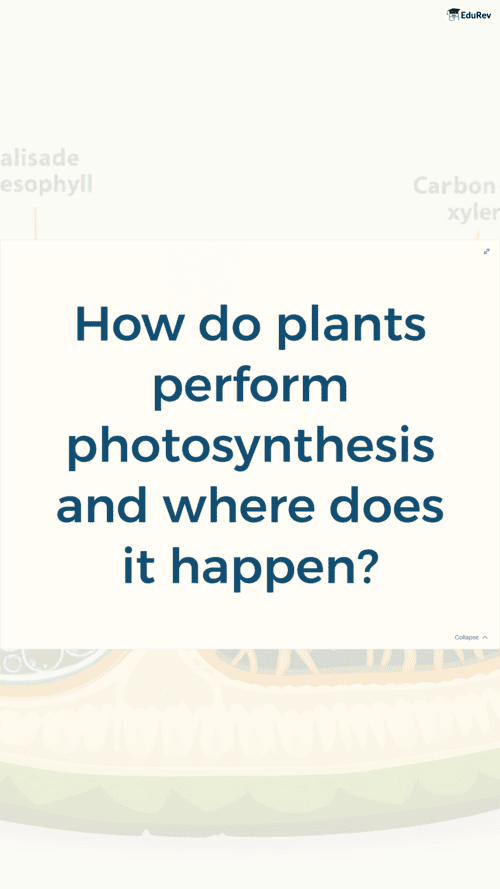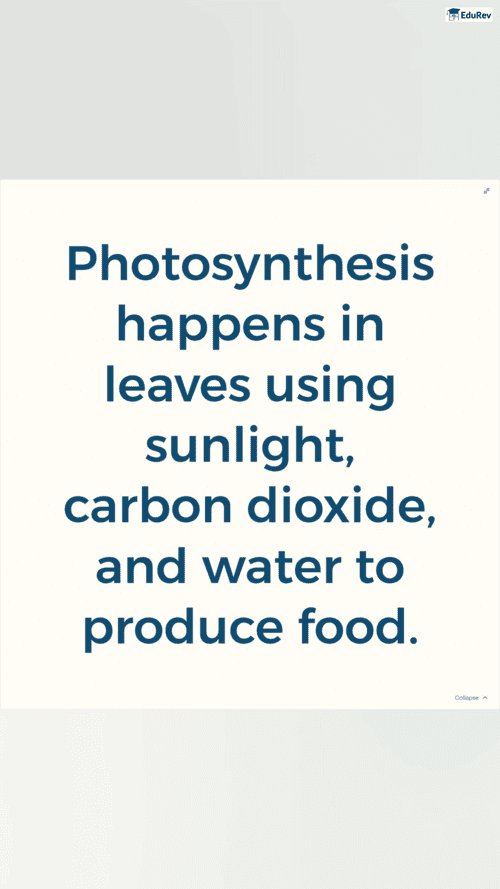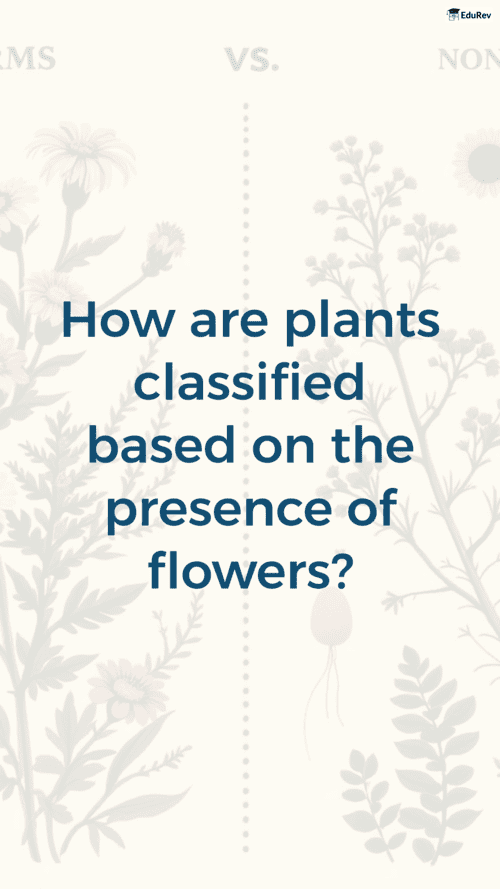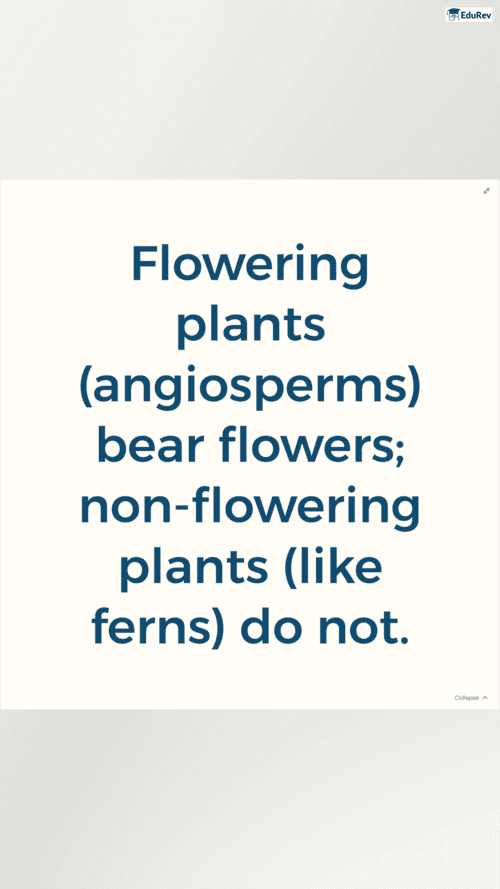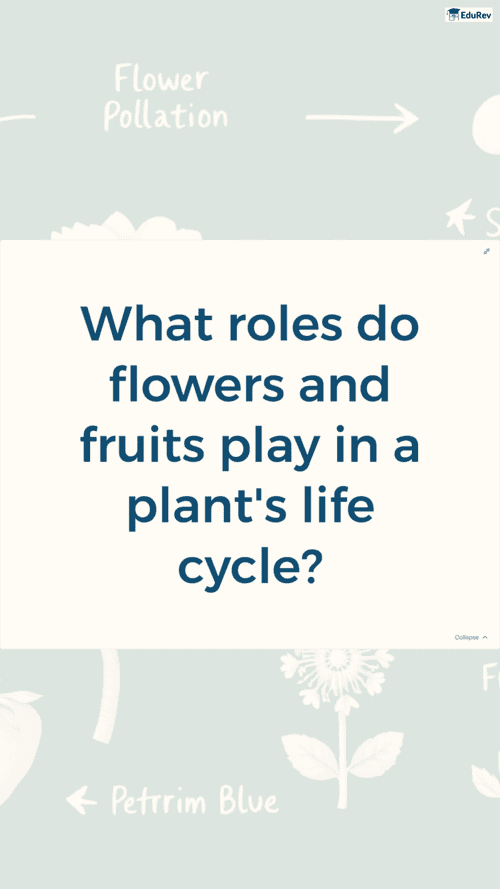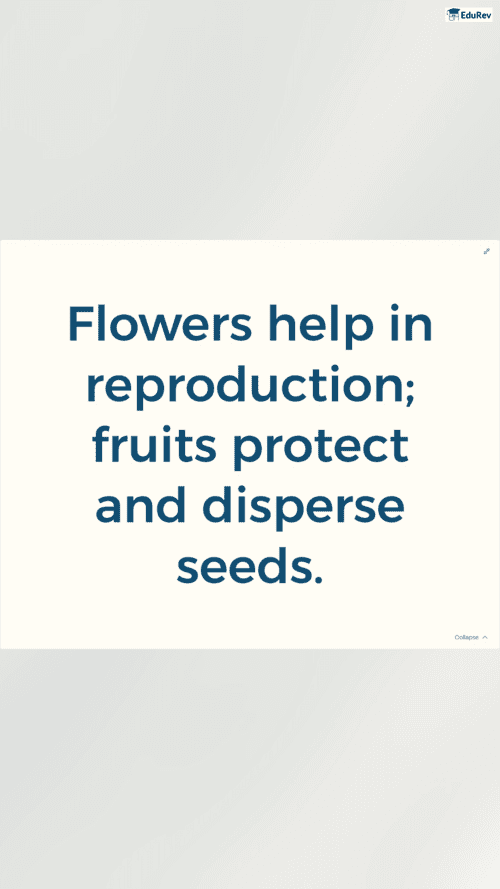 Unlock all Flashcards with EduRev Infinity Plan Starting from @ ₹99 only
|
CTET & State TET Exam > EVS & Pedagogy Paper 1 for CTET & TET Exams > Flashcards: Animals & Plants
|
21 videos|139 docs|35 tests
|
FAQs on Flashcards: Animals & Plants Flashcard - EVS & Pedagogy Paper 1 for CTET & TET Exams - CTET & State TET
| 1. What are the main differences between animals and plants? |  |
Ans. The main differences between animals and plants include their modes of nutrition and cell structure. Animals are heterotrophic, meaning they obtain their food by consuming other organisms, while plants are autotrophic, using photosynthesis to convert sunlight into energy. Additionally, plants have cell walls made of cellulose, while animal cells do not have cell walls.
| 2. How do animals adapt to their environments? |  |
Ans. Animals adapt to their environments through various mechanisms, including physical adaptations, behavioral changes, and physiological responses. For example, some animals develop thicker fur in colder climates, while others may change their feeding habits or migrate to find food and suitable habitats.
| 3. What role do plants play in the ecosystem? |  |
Ans. Plants play a crucial role in ecosystems by producing oxygen through photosynthesis, serving as the primary food source for herbivores, and stabilizing soil with their root systems. They also provide habitat and shelter for various animal species, contributing to biodiversity.
| 4. How do animals and plants communicate with each other? |  |
Ans. Animals communicate through vocalizations, body language, and chemical signals, while plants can communicate through root exudates and volatile organic compounds. For example, some plants release chemicals to warn neighboring plants of herbivore attacks, prompting them to produce defensive compounds.
| 5. Why are biodiversity and conservation of animals and plants important? |  |
Ans. Biodiversity is vital for ecosystem resilience, providing a variety of species that can adapt to changes and challenges. Conservation of animals and plants is essential to maintain ecological balance, support food security, and preserve the natural beauty and health of our planet for future generations.
Related Searches




